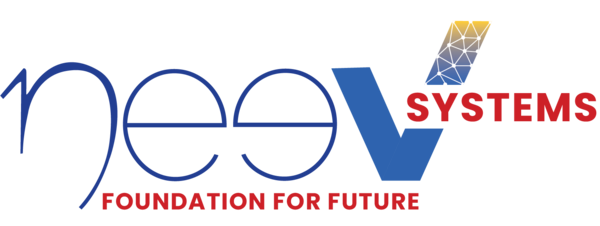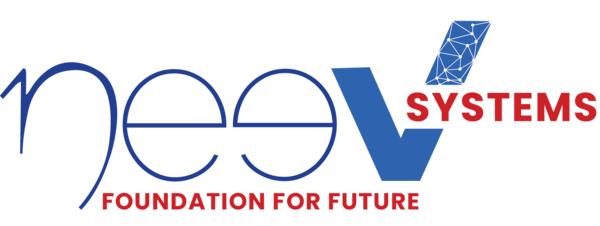Like every other industry undergoing digital transformation, the manufacturing sector is also evolving drastically. Technology leaders in this sector now realize the pursuit of innovation is inevitably intertwined with the complexities of technology integration. As Industry 4.0 ushers data-driven efficiency and interconnectedness, CIOs must plan to align innovation with cost-efficiency.
The coexistence of numerous legacy machines and systems presents a challenge, demanding a strategic approach to build a cost-efficient manufacturing tech ecosystem.
Prioritization, Use Cases, and Integration Dependencies: A Symphony of Efficiency
Since manufacturing facilities house a complex web of diverse tools and systems, interoperability – the ability of these disparate systems to communicate seamlessly – emerges as a central challenge. Prioritization is the first step to designing a seamless technology integration. Manufacturing organizations must meticulously identify and prioritize use cases that promise the most significant impact on efficiency and productivity.
The next step is to outline the integration dependencies based on business goals.
The trick is to connect the dots between the old and the new – syncing legacy machinery‘s robust reliability with digital infrastructure’s transformative potential. While the Internet of Things (IoT) sensors, cloud systems, and advanced tools (AI, ML, BI, analytics, etc) drive automation and efficiency, the real test is not merely adopting these technologies but orchestrating their integration seamlessly.
In this blog, we’ll uncover the core technological challenges of the manufacturing sector and explore how organizations can design a cost-efficient manufacturing tech ecosystem through seamless enterprise integration.
Technological Integration Challenges in the Manufacturing Sector
Integrating the latest technology and tools into the existing fabric of a company’s IT ecosystem is highly challenging. It’s like fitting puzzle pieces together, making sure all pieces fit perfectly well.
In the manufacturing sector, where each machinery/system plays a pivotal role in the production process, achieving seamless interoperability within limited budgets demands strategic decision-making. CIOs must balance immediate financial constraints and long-term goals related to operational efficiency, scalability, and competitiveness within the industry.
The challenges that manufacturing companies face while planning tech integration are:
Vendor-Specific Protocols
The existence of a diverse range of machinery and systems in manufacturing often introduces vendor-specific protocols and mandates. In this scenario, achieving interoperability amid budget constraints becomes complex, often requiring custom middleware or adapters to facilitate effective communication.
Legacy Equipment Compatibility Hurdles
Many manufacturing facilities rely on legacy equipment lacking standardized interfaces or support for contemporary communication protocols. Integrating these older machines into a networked environment without incurring significant costs is difficult.
Disjointed tech stacks arising from an incompatibility between legacy and modern technologies or between systems handling multiple data formats hamper the smooth information flow and collaboration across the value chain.
Cost Implications of Retrofitting or Upgrading
Enhancing interoperability by upgrading legacy machinery is generally quite costly. Budget limitations may constrain the ability to retrofit older equipment with new communication modules or upgrade their software to align with modern standards.
Integration Complexity and Testing
Ensuring seamless communication across diverse systems requires rigorous testing and validation. In the face of limited budgets, conducting comprehensive testing becomes daunting, potentially leading to compatibility issues or system failures during integration. For instance, integrating a new inventory system with an existing production setup without proper testing might lead to glitches in tracking or order processing.
Absence of Scalable Solutions
While off-the-shelf interoperability solutions might be affordable, they may not sync perfectly with the unique requirements of the manufacturing environment. Developing and implementing custom solutions tailored to diverse systems increases costs significantly.
Lack of Skilled Expertise
Integrating diverse systems demands specialized expertise. Organizations planning to implement new tools and systems must invest in training programs and workshops and hire skilled personnel.
In the manufacturing sector, there’s a prominent shortage of skilled professionals in data analytics, cybersecurity, cloud computing, AI, RPA, etc. The lack of right talent and expertise to handle different technologies and integration requirements poses a hurdle in the company’s digital transformation plan.
Balancing Short-Term Gains and Long-Term Interoperability
Cost constraints may drive the adoption of quick-fix solutions for immediate interoperability, potentially compromising long-term scalability and compatibility. Teams may use solutions that appear cost-efficient initially, but such workarounds usually increase the TCO and lead to technical debt over time. This short-term approach could result in increased future expenses for reintegration or comprehensive system overhauls.
Risk of Disruption and Downtime
Choosing DIY or point-to-point integration solutions has inherent complexities and pitfalls, including lack of documentation, testing and QA challenges, integration failures leading to data loss, and performance impact due to longer downtime, to name a few. These disruptions can directly impact production schedules and output, aggravating the financial pressures associated with existing cost constraints.
The Need of the Hour: Smart Manufacturing With Cost-efficient Technologies
A facet of Industry 4.0, smart manufacturing employs disruptive technologies to streamline and automate manufacturing processes. It integrates multiple technologies, including AI, ML, BI, IoT, robotics, big data analytics, and cloud computing to optimize operations, automate workflows, and disrupt data silos.
As organizations collect and analyze real-time insights from business data (machines, processes, supply chain, and market), they can identify problem areas and new opportunities, optimize production schedules, minimize wastage, improve cost efficiency and boost ROI. By leveraging smart manufacturing technologies, companies can also improve their responsiveness to changing customer needs, reduce lead times, and lower costs.
The integration of new-age, cost-efficient technologies promises the following benefits:
- Streamlined communication: The right integration approach facilitates smooth communication among diverse systems and machinery. Such cost-effective interoperability simplifies the integration of new technologies without requiring expensive custom solutions or modifications.
- Reduced Integration Costs: A reliable integration service provider can implement budget-friendly interoperability solutions, eliminating the need for custom coding or extensive retrofitting of legacy systems. Seamless integration between legacy and modern systems reduces the scope for manual intervention, further cutting costs.
- Optimized Resource Allocation: Cost-effective interoperability empowers business leaders to allocate resources strategically. Instead of disproportionately investing in resolving compatibility issues, resources can be directed toward broader strategic initiatives, optimizing overall resource utilization.
- Enhanced Scalability: Cost-efficient interoperability solutions often exhibit excellent scalability, facilitating seamless expansion or integration of additional systems without incurring substantial costs. Companies can capitalize on this scalability to support their long-term plans and accommodate evolving manufacturing needs.
- Faster Time to Value: Pre-built or standardized integration solutions significantly reduce integration time and help businesses realize their integration goals. Faster time to value minimizes disruptions in manufacturing processes and reduces potential downtime.
- Improved Data Accessibility: When different systems can communicate well, and the data flows across them smoothly, it enables data democratization and accessibility. Different stakeholders can access the right data at the right time and in the right format. With real-time, accurate insights, teams can make better decisions to improve overall efficiency.
- Future-proofing Investments: A reliable IT service provider ensures that their integration solutions align with industry standards and best practices, thus future-proofing technology investments. It minimizes the risk of significant reinvestment in integration efforts in the near future.
- Adaptability and Innovation: Well-integrated systems enhance manufacturers’ adaptability to market changes, production needs, and customer preferences. This adaptability allows companies to easily adopt the latest technologies to promote innovation and digital transformation.

Empower Manufacturing with Cost-Effective Integration
How to Integrate Cost-efficient Technologies Into the Existing IT Infrastructure?
Building a synchronized IT ecosystem where legacy systems work harmoniously with modern technologies demands careful mapping of business needs, integration goals, and technology compatibility.
Below are the core tenets of building cost-efficient interoperability:
- Building on Existing Infrastructure: Build upon the foundation of the company’s current infrastructure. Identify and leverage compatible systems and protocols already in place to minimize extensive modifications or costly replacements.
- Standardized Interfaces: Adopting standardized interfaces and protocols widely accepted in the manufacturing industry promotes smoother integration across diverse systems, reducing the effort and cost required for compatibility.
- Modular, Scalable Architecture: Design an interoperability framework that is modular and scalable. Choose an architecture that allows seamless integration of additional components, adapting to evolving manufacturing needs without hefty redesign costs.
- Reusable Integration Components: Deploying reusable integration components or templates applicable across various systems helps streamline the integration process, cutting development time and lowering overall integration costs.
- Cloud-based Integration: Utilize cloud-based integration platforms with flexible pricing models and scalability. Cloud solutions offer pay-as-you-go models, minimizing upfront costs and enabling easy scaling as the manufacturing ecosystem expands.
- API-First Integration: An API-first approach to integration enables seamless communication through well-defined interfaces. It fosters interoperability, reduces complexity, and facilitates cost-effective connections between systems.
- Predictive Analytics: Implement predictive analytics to anticipate integration challenges and opportunities. By analyzing historical data and trends, proactive measures can be taken to mitigate potential bottlenecks, minimizing integration costs.
- Optimizing Workforce Skills: Empower the existing workforce through targeted training in integration methodologies and tools. This ensures optimal resource utilization without incurring additional staffing expenses.
- Ongoing Evaluation and Optimization: Regularly assess the interoperability framework’s performance and cost-effectiveness. Implement iterative improvements based on feedback and technological advancements to maintain high-value, low-cost.
Implementing and managing such a long list of integration requirements is both time and labour-intensive. It requires technology expertise and ongoing support. Often, manufacturing organizations do not possess the right skills and resources in-house to build, implement, and maintain integrations cost-efficiently. The best option in this scenario is to outsource the integration to a reliable IT vendor like Neev Systems.
At Neev Systems, we offer strategic implementation and advisory services to facilitate seamless integration between apps in your IT stack and offer real-time and consistent data views across systems.
Our experts leverage top integration platforms and best practices to design, implement, and manage customized integration solutions for your unique business needs. By partnering with us, you can benefit from agile delivery models, reusable integration patterns, and cost-effective dual-shore operations. Our solutions and methods help reduce IT complexity and improve agility while giving you a competitive edge.

Join the Smart Manufacturing Revolution!
Align your technology with your goals for a competitive edge.

Ansar Syed
With 10+ years of experience as an integration architect, Ansar specializes in delivering complex business solutions through strategic planning, custom designs, and process automation. He collaborates closely with stakeholders to enable seamless business processes and exceptional outcomes using integration tools.


